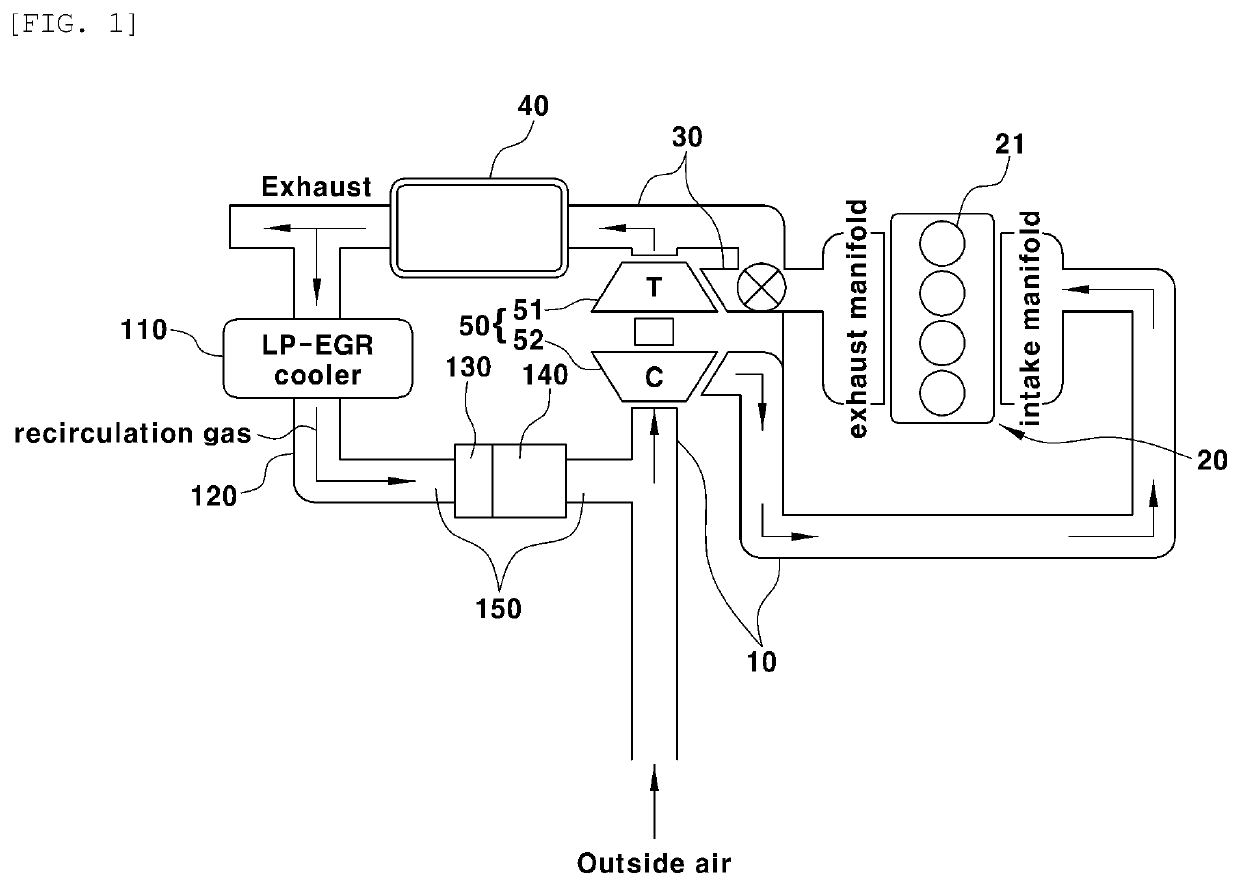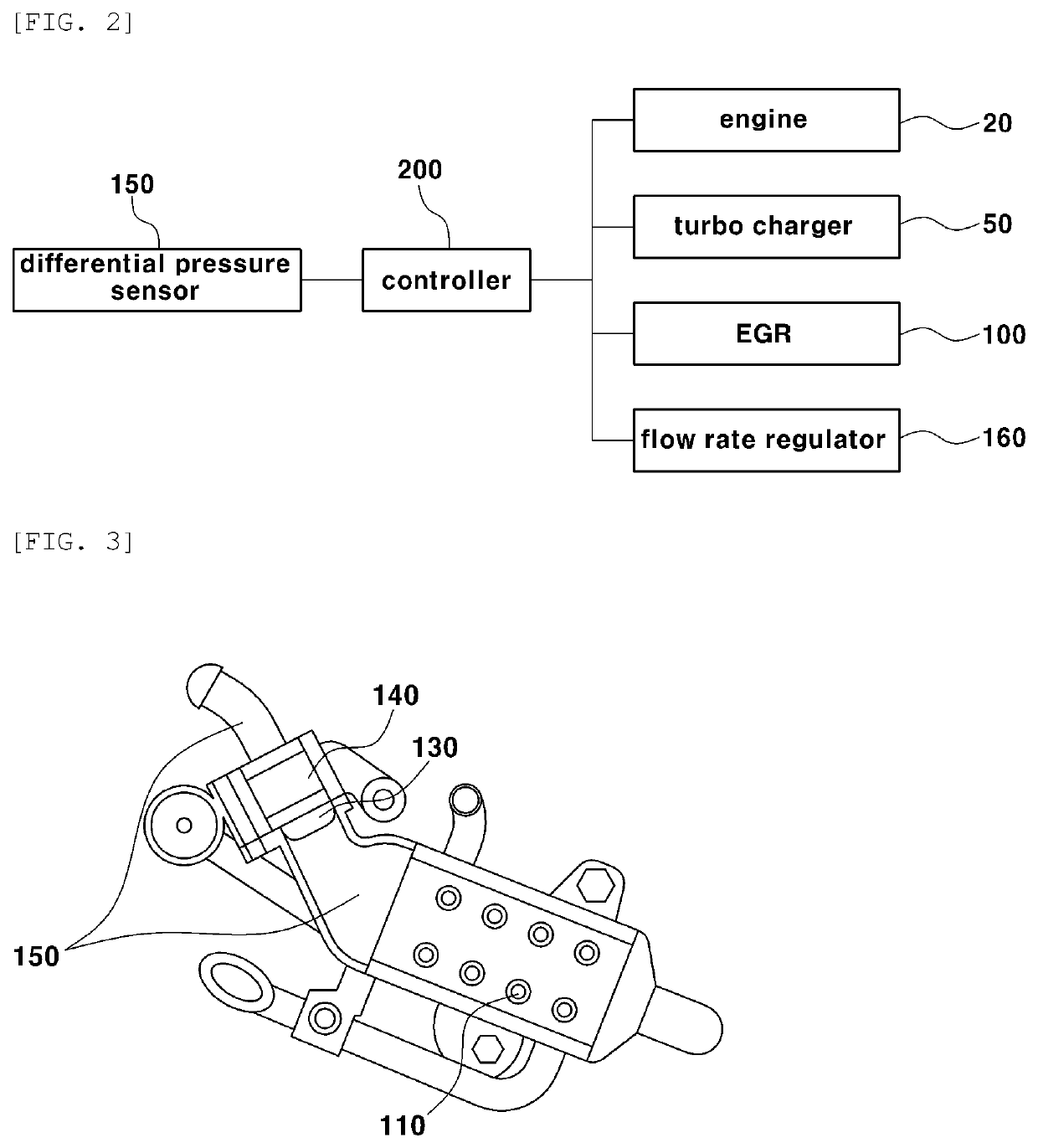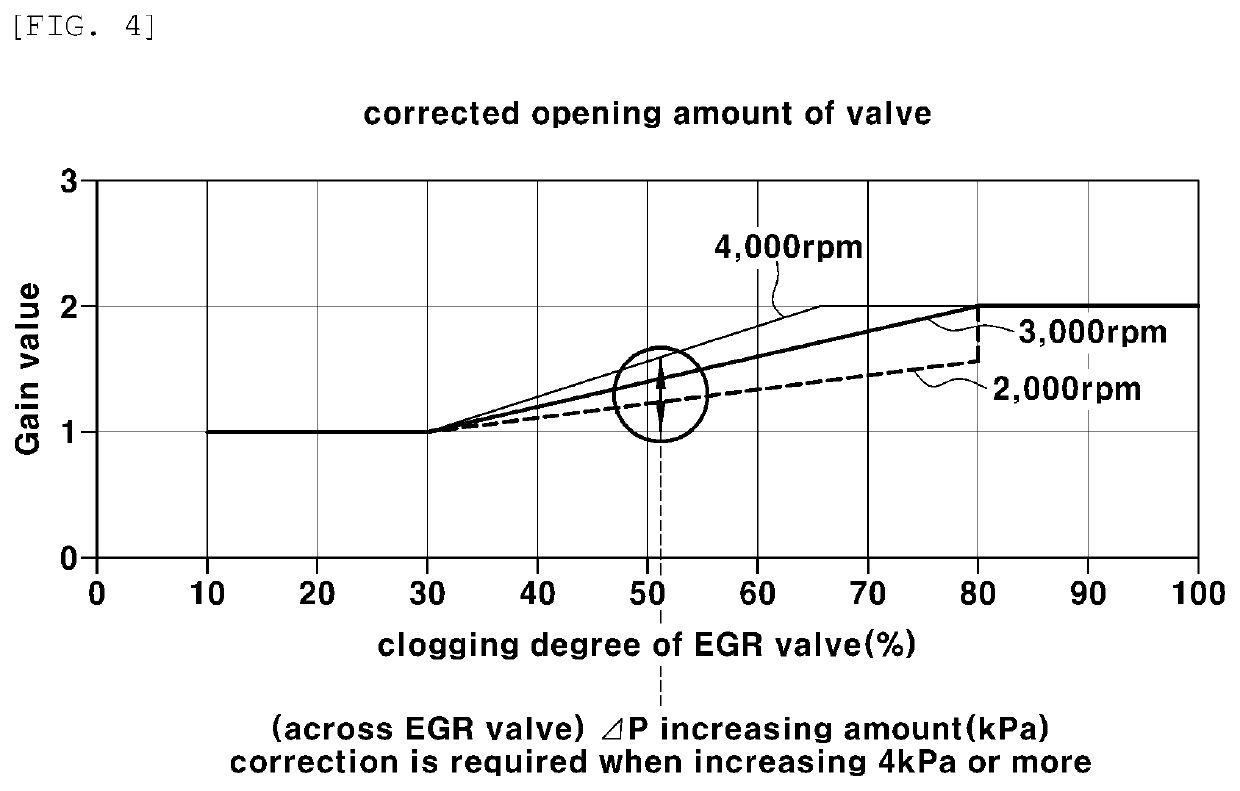Valve opening control apparatus and method of gasoline egr system
- Summary
- Abstract
- Description
- Claims
- Application Information
AI Technical Summary
Benefits of technology
Problems solved by technology
Method used
Image
Examples
Embodiment Construction
[0043]Hereinafter, embodiments of the present disclosure will be described in detail with reference to the accompanying drawings. The embodiments of the present disclosure can be modified in various forms, and the scope of the present disclosure should not be construed as being limited to the following embodiments. This embodiment is provided to more fully explain the present disclosure to those skilled in the art.
[0044]Also, the terms “part”, “unit”, “module”, the like, which are described in the specification, mean a unit for processing at least one function or operation, which can be implemented as hardware, software, or a combination of hardware and software.
[0045]FIG. 1 is a conceptual diagram showing a configuration of an engine system provided with an EGR system 100 (hereinafter referred to as an “engine system”) according to an embodiment of the present disclosure. FIG. 2 is a block diagram showing a configuration of the engine system according to an embodiment of the presen...
PUM
 Login to View More
Login to View More Abstract
Description
Claims
Application Information
 Login to View More
Login to View More - R&D
- Intellectual Property
- Life Sciences
- Materials
- Tech Scout
- Unparalleled Data Quality
- Higher Quality Content
- 60% Fewer Hallucinations
Browse by: Latest US Patents, China's latest patents, Technical Efficacy Thesaurus, Application Domain, Technology Topic, Popular Technical Reports.
© 2025 PatSnap. All rights reserved.Legal|Privacy policy|Modern Slavery Act Transparency Statement|Sitemap|About US| Contact US: help@patsnap.com



